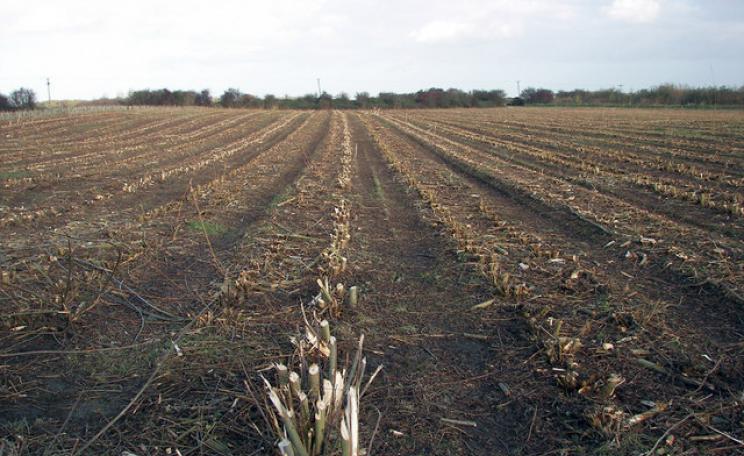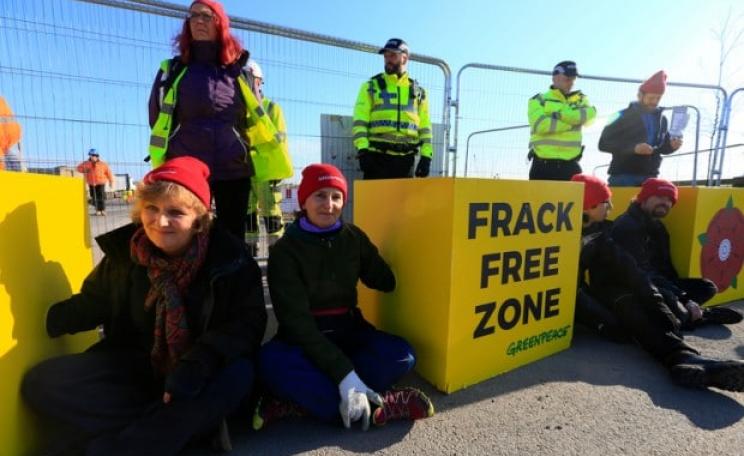Natural gas has helped us divest from coal and its huge carbon footprint, and it seems to provide a solution for renewables’ few apparent shortcomings.
The idea of banning fracking isn’t new. But, as calls increase around the world for fossil fuel divestment, bans on hydraulic fracking have entered the political mainstream as a very real election issue both in the United States and the United Kingdom.
Putting fossil fuels behind us for good, despite the now-well-publicised urgency of doing so, has proven an uphill battle. Entrenched interests in the oil and gas community have doubled down on fracking as a way to “pivot” to renewables. The practice is supposed to reduce greenhouse gases compared to coal, but it also keeps us dependent on fossil fuels.
It would be good if fracking did help us lower carbon emissions compared to previous levels, but it brings potential trouble of its own, including earthquakes and water and air contamination. Maybe fracking really is the “coal killer” people say it is. But are renewables the “fracking killer”?
Fracking advantages
Fracking is one method of obtaining natural gas. Per unit of energy, natural gas yields in the United States roughly half the carbon emissions as burning coal. Fracking also doesn’t require the level of visible destruction that open-pit mines and mountaintop removal procedures do.
With natural gas cheaper for utilities to deploy and more efficient in generating power, it’s easy to see why natural gas has filled out the areas in America’s energy portfolio where coal used to reside. Coal-based power plants cannot realistically compete any longer.
Natural gas power plants perform capably during periods of high demand in a way that nuclear and coal plants cannot. As solar and wind production ebb and flow, natural gas-based power plants can come online very quickly and fill in any supply shortfalls.
For these reasons, fracking and renewable energy generation have enjoyed simultaneous growth over the last several years. Over a decade, renewable electricity capacity in the US doubled even as natural gas investments continued. Natural gas has helped us divest from coal and its huge carbon footprint, and it seems to provide a solution for renewables’ few apparent shortcomings.
However, saying that investment in fracking today “encourages” investment in renewable energies like solar and wind is a little disingenuous.
Natural gas has helped us divest from coal and its huge carbon footprint, and it seems to provide a solution for renewables’ few apparent shortcomings.
Fracking downsides
One of the big arguments against fracking is that it keeps us dependent on fossil fuels. At a time when scientists say there is a literal ticking clock counting down to the end of farming and the apparent heat-death of planet earth, many argue it’s time to put fossil fuels behind us for good. Investing here feels increasingly like a backward-looking endeavor.
Fracking is seen as a net positive because it helps keep oil and gas prices manageable while we shift away from coal. But it’s also a huge problem for those same reasons: Low oil and gas prices mean there’s little profit motive in finding more efficient automobile technology and improved batteries.
Indeed, as fracking has grown in popularity, automotive conglomerates have increased, rather than decreased, lobbying to keep mile-per-gallon regulations low for American cars and emissions regulations high. If fracking was at any point intended to be a measure to “buy ourselves time” as we solve the transportation emissions and electric car problems, it seems that mission has been entirely subverted by industrialists.
Moreover, researchers are sounding alarm bells about wastewater production in the oil and gas sector and the remarkable speed with which fracking activities can reduce or dangerously deplete local water tables. Some 17 million Americans live within a mile of a fracking site. Proximity to wells correlates with low-birth-weight babies and other health problems.
Estimates also say fracking in the U.S. is single-handedly responsible for around half the global increase in methane emissions and leaks over the past decade. Methane is a greenhouse gas, and another one that industries don’t want regulated. Even as it helps reduce the greenhouse gases in our energy portfolio once emitted by coal, it’s doing damage of its own in other ways.
Controversy continues
Will renewables ever replace fracking? The U.S. produced more electricity using natural gas than it did using any other method in 2018, with 34 percent of the energy portfolio. In 2018, nuclear energy stood at 19 percent and renewables stood at 20 percent. But even among industry insiders, there are worries that the low energy prices supported by fracking are “artificially” low and that they can only increase from here.
Moreover, the balance may already have shifted. In Los Angeles’ Power and Water department made the decision to build a solar farm with battery storage instead of a natural gas power plant. Making the decision to embrace renewables will mean Los Angeles can produce electricity for half the cost of natural gas. When our electric grids become capable of storing as much electricity in batteries (for high-demand, low-supply periods) as would be supplied by natural gas, we will have no practical need for fracking any longer.
The cost-effectiveness of renewables may not be uniform everywhere right now. But we can say with some certainty that the average cost for renewables will only fall, while the average cost to spool up a new natural gas plant can only increase. There is also ample evidence that renewable energy projects enjoy far more support from the population than fracking projects — sometimes fully twice as much support.
According to climate scientists, the planet cannot afford new oil and gas projects if we’re to realize our collective climate goals. Fracking came along at an important moment and helped us reduce our greenhouse gas emissions and get close to divesting ourselves of coal.
Now, renewables and fracking share a mutually beneficial relationship. Shortly, however, we’re likely to look back at fracking as the “booster rocket” we needed that got us to something better. In this case, the “something better” is a future powered by 100 percent renewable energy.
This Author
Emily Folk is a regular contributor to The Ecologist, a conservation and sustainability writer and the editor of Conservation Folks.







